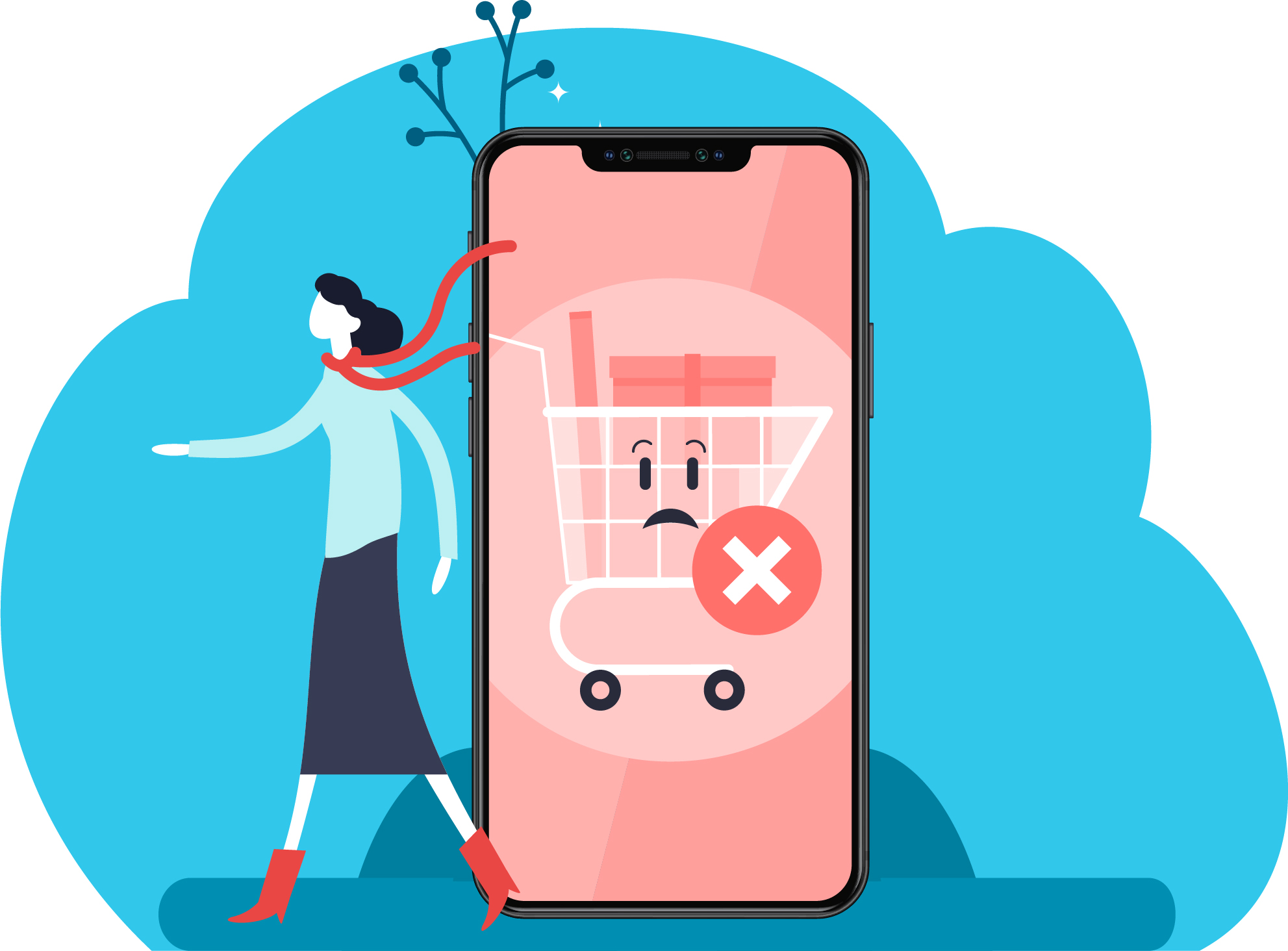Expert answers to your mobile reengagement questions
To mobile marketers, retargeting represents both an irresistible opportunity and a deceptive trap. Say that a user downloads your fantasy sports app during spring training and starts drafting a team, but abandons it before entering into play. Three weeks later, on their favorite gaming app, they encounter your dynamic ad showing current player stats, tap through, and finally subscribe to join the league. Your dashboard shows a successful retargeting conversion at a fraction of a new user acquisition cost—marketing victory, right? Not necessarily. On paper, retargeting is a strategic juggernaut to sweep up users already familiar with your brand into paying customers, producing conversion metrics that often look spectacular compared to new UA. But beneath the enticing numbers lies a technical reality: Retargeting is ultimately two data points matching based on an established ruleset, and when the technical settings don’t align with strategic intent, issues arise.

What appears to you as successful retargeting may be just natural user behavior misattributed to ad campaigns—leaving you paying for actions that would have happened anyway. The warning signs are often hiding in plain sight: suspiciously cheap CPAs (like $0.75 for a QSR meal order) or reengagements occurring with unnatural frequency via the “ping-pong effect” in which users bounce rapidly among network attributions, sometimes changing association multiple times per week. The resulting mismatch creates the illusion of campaign success while draining marketing budgets and effecting minimal actual impact.
Setting the Record Straight: Key Insights from Kochava Foundry Retargeting Webinar
Kochava recently held a webinar that cut through the phantasm of effortless retargeting success. Led by Grant Simmons and Seth Turnlund of Kochava Foundry, the discussion highlights a key principle: Retargeting works when the strategic (marketing intent) aligns perfectly with the technical (measurement data). When these elements operate in separate spheres—and marketers’ expectations clash with measurement reality—impressive numbers mask disappointing results.
“What you want to make sure is that those two things are the same,” Turnlund emphasizes. “It is absolutely possible that what the marketers think those numbers represent, or even what the network thinks those numbers represent in the MMP, aren’t what they represent.”
The Six Levers
Simmons and Turnlund identify six key configuration levers marketers can deploy to manage retargeting campaigns properly:
- Network Inventory Overlap: Strategies for preventing simultaneous reengagement efforts among partners
- Event Association Lookback: Length of time a network should receive credit for post-reengagement activity
- Minimum Time to Reengage: Appropriate cooldown period between reengagement attributions
- Attribution Lookback Windows: Appropriate time frames for determining clicks and impressions
- Network Event Postbacks: Events that should be posted back to networks—and when
- Eligible Reengagement Events: In-app actions that qualify as legitimate reengagement
The levers work together as an integrated system, so the Foundry duo notes that incremental improvements across the parameters yield better results than dramatic changes to any single setting. The essential first step is auditing your current configurations, then methodically adjusting each lever while measuring impact before moving to the next.

Beyond CPAs: Measuring What Matters
The session also notes that fixating solely on low CPAs can become a dangerous trap. As Turnlund pointedly states, “Sometimes we substitute CPA as a simple, easy-to-understand proxy for how well we’re doing. But what we can see is you have cheap CPAs, and you’re paying many, many CPAs. Those CPAs in total represent a relatively small number of users getting reengaged and performing activity. You want to optimize for profit rather than CPAs.”
This mindset requires that marketers look beyond surface metrics to understand the true incremental value of their retargeting efforts, while distinguishing between genuine reengagement and organic behaviors that would have occurred naturally.
”The answer is probably in your data.
Grant SimmonsVP, Kochava Foundry
Your Pressing Questions Answered
The Foundry Team has gathered questions from webinar attendees seeking to apply these principles to specific challenges. Read on for detailed answers provided by Grant Simmons to help you optimize mobile retargeting campaigns.
Check out the full webinar on demand as well as our AdTech Trends video Mastering Reengagement.
How does Kochava integrate with platforms like Google Ads and Facebook Ads for unified cross-channel retargeting?
Kochava integrates with self-attributing networks (SANs) like Google and Facebook via a suite of APIs. Integration largely comes down to campaign and tracker setup. Make sure that the settings configured conform to what you want and are not the MMP’s defaults. Important settings include lookback windows and minimum time to reengagement.
While you’ll have somewhat less control over your campaigns in large platforms like Facebook and Google, you can still configure critical settings within your MMP. The principle is straightforward—apply the same rigor to these major platforms as you would to any specialized retargeting partner.
How do reengagement attribution configurations work, and how can we optimize them to convert dormant users?
In essence, reengagement attribution configurations are built to match clicks and events accurately using controlled time windows and event selections. Optimization involves tuning each of these parameters to suit your campaign dynamics, thereby improving the tracking and conversion of dormant users. For Kochava-specific mechanics of campaign and tracker setup, please refer to this guide.
The key is ensuring that your configuration properly reflects strategic marketing goals rather than just defaulting to the most generous attribution settings. Most importantly, don’t change everything at once—methodically review and adjust one parameter at a time, measuring impact before moving to the next lever.
How does your omnichannel attribution track cross-platform behavior, and what benefits does this bring to mobile reengagement?
Within Kochava, our omnichannel attribution solution collects and correlates user interactions across web, mobile, and CTV platforms to build a unified view of the customer journey. It tracks key touchpoints using controlled lookback windows and sophisticated identity resolution, ensuring accurate pairing of ad impressions and clicks with in-app events. This detailed mapping reduces attribution noise and confirms that mobile reengagement efforts target genuinely dormant users. As a result, our system optimizes ad spend, refines audience segmentation, and ultimately enhances conversion rates for your mobile reengagement strategy.
This comprehensive visibility helps marketers determine where and when a user truly disengages, allowing for more precise targeting of genuinely lapsed users vs. those who may still be active via other channels.
How can we prevent duplicated reach in mobile retargeting, particularly for fintech apps?
Mitigating duplicated reach involves a conversation with your network partners to ensure that they’re serving as unique inventory as possible. While Kochava can be used to segregate it somewhat, it’s primarily about identifying the problem and discussing solutions with your partners. Strategies such as suppression lists, audience lists, and region-based targeting can be effective. For fintech apps, focus on the LTV metrics to understand when drop-off happens and when to initiate reengagement (early, up front, or after months).

We frequently see concerning levels of inventory overlap, with some users receiving impressions from multiple retargeting partners simultaneously—essentially causing advertisers to bid against themselves. Your MMP data can identify this problem, but solving it typically requires direct coordination with partners to divide targeting responsibilities more effectively.
How useful are frequency caps and suppression lists in avoiding the ping-pong effect?
Frequency caps and suppression lists can be useful but do have limited effectiveness, especially on iOS due to ATT.
As noted during our discussion, “Anybody who’s been in this game for long enough knows that frequency caps are very, very hard to manage, especially on iOS.” The ability to maintain an accurate suppression list has become increasingly difficult with the introduction of App Tracking Transparency (ATT), especially for targeting iOS devices. On Android, frequency caps are easier to manage.
It’s essential to verify that whatever strategy you use (network-side or MMP-side) actually works and is followed through.
Do CRM/owned media activities intensify the ping-pong effect, and what are best practices for separating paid and owned retargeting?
Yes, CRM/owned media activities can increase the ping-pong effect. The best practice is to treat CRM efforts like any other network regarding attribution and measurement. Teams should commit to accuracy, not loosening the rules on owned media. Ensure that the same measuring stick gets applied to both paid and owned media. Implement suppression lists for users you want to reach only through owned channels and verify that these are implemented correctly by your network partners. Give your networks the lists, but continually verify that everything has been implemented correctly. Mistakes happen, so there could be some overlap. The bottom line is that anytime a suppression list is in play, a report should be in play, and you should be making sure it is actually obeyed.
This balanced approach helps prevent the internal competition that can arise when different departments optimize for their own KPIs rather than overall business outcomes.
How does probabilistic attribution work for retargeting, particularly on iOS devices?
Probabilistic attribution generally relies on shared IP addresses around timestamps. For iOS, especially after ATT, probabilistic attribution is difficult. Solutions often involve targeting pre-iOS 14.5 users or employing “funky math” to factor up based on observed Android data. Social partners such as TikTok or Meta model conversions within their walled gardens, but distinguishing observed from modeled conversions remains challenging.
Your best approach combines first-party data suppression lists, partner-specific solutions, and shorter attribution windows to minimize probabilistic “messiness.” And this raises another important question:
With iOS ATT limitations, aren’t reengagement campaigns limited to double-consent users anyway, since audience list syncing requires user opt-in?
Exactly right. Due to ATT restrictions, audience-list-based retargeting campaigns inherently target only double opt-in users, as user identifiers are required for list syncing. For the broader opt-out audience, your options include SKAdNetwork-based campaigns that leverage aggregated conversion data and contextual targeting.
Our webinar discussion highlights an additional approach: Analyze trends in your double opt-in users and carefully extrapolate to the broader audience. Just remember that these consenting users likely represent a fundamentally different cohort than opt-out users—more engaged, tech-savvy, and potentially higher-value.
What experience should we bring users back to in a sports game where player contracts expire, making remarketing challenging?
Given the challenge of expiring player contracts in your sports game, a recommendation could focus on bringing users back to an experience that emphasizes fresh content, community engagement, and personalized recommendations. Concentrating on new game modes or features can draw users back into the game, irrespective of specific game mechanics expiring (i.e., contracts). Personalizing the experience using data on past gameplay can further help provide users with more attractive reengagement. Moreover, highlighting social aspects such as leagues or tournaments also gives returning users appealing reengagement that’s less affected by expiration of player contracts (in this case).
The key is avoiding reengagement that directs users straight to a frustrating experience, possibly reinforcing their reasons for churning in the first place.
Our users create accounts but often don’t use the app after. How do we find out why?
Scrutinize your data. Look at make, model, and operating system. Start by looking at post-install events. Check performance differences between attributed and unattributed users, and check differences by attribution sources. Compare internal diagnostics with MMP reporting. Breaking down user behaviors by cohort can reveal important patterns, while comparing organic and paid user engagement can highlight potential issues with specific acquisition sources. In some cases, the pattern may indicate fraud—per Simmons, “Digital ad fraud is still the second-largest criminal organized enterprise on the planet.”
Moving Forward: Strategic Recommendations
 Based on webinar insights and Q&A, some key recommendations emerge for marketers seeking to optimize mobile retargeting efforts:
Based on webinar insights and Q&A, some key recommendations emerge for marketers seeking to optimize mobile retargeting efforts:
- Audit your current configuration: Review the six key levers in your MMP settings—then make changes methodically rather than all at once.
- Focus on incremental value, not just CPA: Cheap conversions may simply represent organic behavior misattributed to advertising rather than true incremental lift.
- Partner with your networks: The most effective solutions often require direct collaboration with retargeting partners to align on network inventory, data sharing, and attribution windows.
- Implement verification systems: Regularly check that suppression lists and other configured limitations actually work as intended.
- Adapt to platform limitations: Particularly for iOS, recognize the limitations created by privacy changes and craft strategies accounting for these constraints.
Success in mobile retargeting requires aligning marketing intent with technical implementation. When marketers understand exactly what their attribution data represents and configure systems to match their strategic goals, retargeting can deliver its promised value—efficiently reengaging users who would otherwise be lost.
Need personalized guidance on your mobile retargeting campaigns? Kochava Foundry has helped scores of companies optimize their reengagement initiatives. Contact the Kochava Foundry Team for a custom consultation and discover how to maximize both the accuracy and impact of your retargeting efforts.




